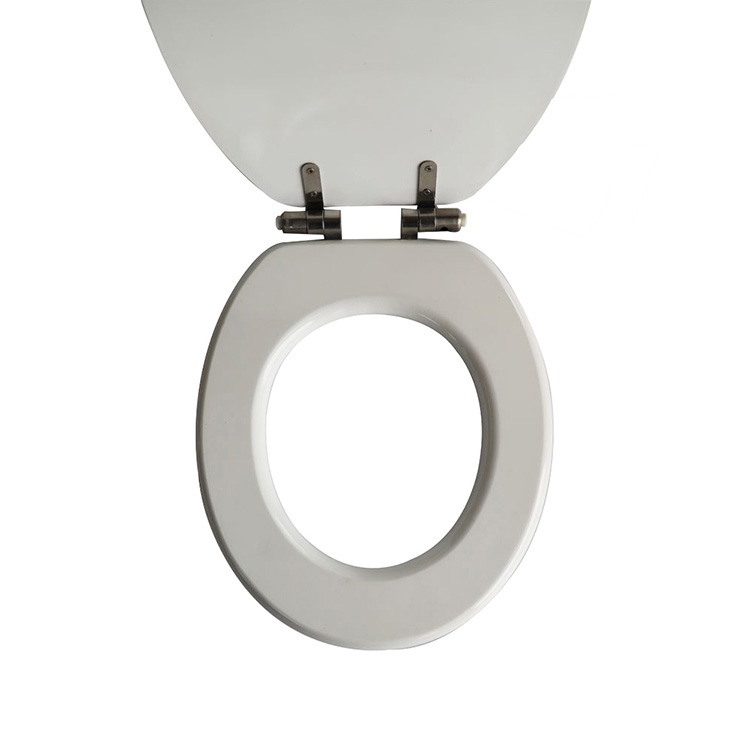Maintenance of Wooden Toilet Seats
2024-05-29
Wooden toilet seats are a popular choice for their aesthetic appeal, warmth, and durability. They add a touch of elegance and comfort to bathrooms and are available in various wood types, finishes, and designs. Here's an overview of wooden toilet seats, including their features, benefits, maintenance, and considerations when choosing one:
Features of Wooden Toilet Seats
1. Material and Construction
- Solid Wood: Made from a single piece of wood or multiple pieces glued together. Common types include oak, mahogany, cherry, bamboo, and pine.
- MDF (Medium-Density Fiberboard): Made from wood fibers bonded with resin and covered with a wood veneer or laminate for a wood-like appearance.
- Finish: Typically coated with a protective finish such as varnish, lacquer, or paint to enhance durability and resistance to moisture.
2. Design and Style
- Shape: Available in standard shapes, including round and elongated, to fit different toilet bowl designs.
- Colors and Stains: Can be found in natural wood tones, stained finishes, or painted in various colors to match bathroom decor.
- Decorative Options: Some seats feature engraved patterns, inlays, or custom designs for added aesthetic appeal.
Benefits of Wooden Toilet Seats
1. Aesthetic Appeal
- Warmth and Elegance: The natural look of wood adds warmth and a touch of luxury to bathroom interiors.
- Versatility: Complements a wide range of bathroom styles, from traditional to modern.
2. Comfort
- Warm to Touch: Unlike plastic seats, wooden seats feel warmer to the touch, providing a more comfortable experience, especially in colder climates.
3. Durability
- Sturdy Construction: Solid wood and high-quality MDF seats are robust and can withstand regular use.
- Longevity: With proper care, wooden toilet seats can last for many years without significant wear and tear.
Maintenance of Wooden Toilet Seats
1. Cleaning
- Gentle Cleaners: Use mild soap and water or a gentle wood cleaner. Avoid harsh chemicals or abrasive scrubbers that can damage the finish.
- Regular Wiping: Clean the seat regularly to prevent the buildup of grime and bacteria.
2. Protection
- Avoid Excess Moisture: Prolonged exposure to water can damage the wood or finish. Wipe spills promptly and ensure the bathroom is well-ventilated.
- Periodic Re-Finishing: Over time, the finish may wear off. Applying a new coat of varnish or lacquer can restore the seat’s appearance and protection.
Considerations When Choosing a Wooden Toilet Seat
1. Compatibility
- Size and Shape: Ensure the seat matches the dimensions and shape of your toilet bowl.
- Mounting Hardware: Check that the seat comes with compatible mounting hardware for easy installation.
2. Quality and Finish
- Material Quality: Choose seats made from high-quality solid wood or MDF for better durability and appearance.
- Finish: Look for a seat with a smooth, even finish to ensure it is well-protected against moisture and wear.
3. Comfort and Ergonomics
- Shape and Contour: Some seats are ergonomically designed for added comfort. Consider seats with a comfortable contour that fits your body well.
4. Aesthetic Preferences
- Color and Style: Select a seat that complements your bathroom’s decor and personal style preferences.
- Decorative Features: Decide if you want a plain seat or one with decorative elements such as engravings or inlays.
Conclusion
Wooden toilet seats offer a blend of comfort, durability, and aesthetic appeal, making them a favored choice for many homeowners. When choosing a wooden toilet seat, consider factors such as material quality, finish, compatibility with your toilet, and your personal style preferences. With proper care and maintenance, a wooden toilet seat can be a long-lasting and attractive addition to your bathroom.



